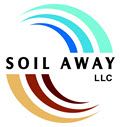
Sewer Backup Restoration Process Explained
Extensive sewer damage to a property is a very serious situation. It is an emergency which requires immediate attention from a qualified sewer backup restoration firm. General contractors, handymen, and janitorial companies are not typically the solution. They are not prepared, trained, or equipped to combat the challenges of a sewer damage loss. Sewer backup restoration and cleanup requires expertise that only trained professionals in that specific field should handle.
Property damage restoration firms qualified to perform sewer damage cleanup have been trained and follow the IICRC S500 Standard of Care for water damage restoration. According to the IICRC S500, sewage is classified as Category 3 water. Category 3 water is “grossly contaminated and can contain pathogenic, toxigenic or other harmful agents” (IICRC S500). These variables create additional challenges in the cleanup process.
“The first concern in any sewer backup restoration situation is safety,” explains Jack Solloway, founder of Soil-Away Cleaning & Restoration Services, LLC. “The potential hazards that people can be exposed to demand a focus on the safety and wellbeing of everyone involved. Once safety protocols have been established for the project, we can work towards cleaning and restoring the building,” he finishes. Personal Protective Equipment (PPE) is one example of a safety measure taken by restoration firms. Respirators, eye protection, full-body disposable coveralls, foot protection, and hand protection are amongst the most utilized PPE.
Sewage, or Category 3 water, cleanup have different requirements from a clean water loss. For example, most building materials such as flooring and sheetrock walls can be dried in place after a clean water loss. Following contact with sewage these same building materials will need to be removed and replaced. The vast majority of porous items (carpets, clothing, furniture, etc…) affected by Category 3 water must be disposed. Most hard, non-porous surfaces such as a concrete floor can be cleaned and sanitized.
The issue of cross-contamination is another major concern during the sewer backup restoration process. “You never want to bring contaminants into a previously unaffected area of a building,” clarifies Solloway. “This can easily be done if contractors are not careful. Engineering controls should be setup prior to work starting. They must be maintained throughout the whole process. The purpose is to isolate the affected areas from the rest of the structure.” Some of the engineering controls Solloway is referencing are HEPA Air Scrubbers to filter the air, temporary walls to contain the area, and decontamination chambers to clean off technicians exiting the workspace.
These are some of the basics of the sewer backup restoration and cleanup process. Mishandling a Category 3 water damage will be costly and potentially dangerous. A sewage cleanup loss should be taken seriously by property owners and facility directors. While it may seem like an overwhelming task, working with the right restoration contractor will definitely ease the pain. “Our goal is to work with our clients and get them back on their feet as soon as possible,” explains Solloway. “A sewer damage situation should never get in the way of the long-term wellbeing of a property or its occupants.”
Soil-Away performs sewer backup restoration services throughout New Hampshire (NH) in the greater Manchester, Nashua, Concord, Portsmouth, and Laconia regions. Soil-Away is available 24/7 for emergency property damage cleanup situations.

